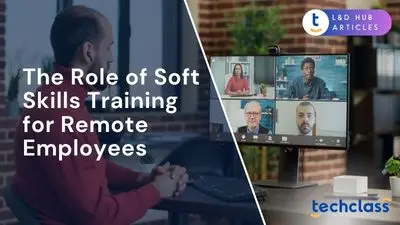
Every customer interaction is a reflection of your organization’s broader ecosystem. In today’s competitive business environment, training shouldn’t stop with your internal employees. Extended enterprise training, educating stakeholders like customers, partners, distributors, franchisees, and contractors, has emerged as a powerful strategy to elevate customer experiences and loyalty. By extending learning opportunities beyond your company’s four walls, you ensure everyone representing your brand can deliver value and consistency to customers. This leads to smoother customer experiences, greater trust, and ultimately, stronger loyalty. In this article, we’ll explore what extended enterprise training entails, why it’s crucial for customer loyalty, and how to implement it effectively for lasting business impact.
Extended enterprise training refers to learning initiatives designed for people outside of your core internal workforce. These are training programs for external stakeholders such as:
In essence, extended enterprise training “extends” your learning and development efforts to your entire business ecosystem. The goal is to ensure everyone who plays a role in delivering your products or interacting with your customers has the knowledge and skills to do it effectively. For example, a company might train its franchisees and their employees on standard operating procedures to guarantee a consistent customer experience across all locations. Similarly, a software firm might offer customer training courses and certifications so that users fully understand the product’s features. By educating these external groups, you set them (and your business) up for success from the start. Everyone learns the same core information, which promotes consistency and quality no matter who the customer deals with.
Investing in training across your extended enterprise has a direct and positive effect on customer loyalty. But how exactly does educating external stakeholders translate into more loyal customers? Consider the following connections between training and loyalty:
1. Knowledgeable Stakeholders Create Happy Customers: When partners and frontline representatives (like resellers, dealers, or customer support teams) are well-trained, they can serve customers better. They provide accurate information, solve problems faster, and handle interactions more professionally. Every positive interaction builds customer satisfaction. Satisfied customers are more likely to become repeat customers, thereby increasing loyalty. In fact, well-informed external partners are positioned to become your brand’s best advocates, shaping positive perceptions that encourage customers to stick with your company.
2. Customer Education Enhances Product Value: Training isn’t just for people selling or supporting your product – it’s also for the people buying it. Customer education (such as tutorials, how-to videos, product manuals, or workshops) helps users understand your product’s benefits and use it effectively. When customers know how to use a product to its full potential, they gain more value from it. This reduces frustration and builds confidence. A customer who feels confident and successful with your product is far more likely to remain loyal. Research supports this: a study by Intellum and Forrester found that a formal customer education program can boost customer retention by around 7.4%. In other words, educated customers tend to stay customers longer because they continuously see the benefit of your offerings.
3. Consistent Experiences Build Trust: Extended enterprise training ensures that whether a customer interacts with your in-house team or an external partner, they receive consistent information and service quality. For example, if all your franchise locations or authorized dealers are trained to follow the same service standards and brand messaging, customers get a uniform experience everywhere. Consistency breeds trust – customers know they can count on the same quality no matter where they engage with your brand. This trust forms the foundation of loyalty; when customers feel they can rely on your company and partners to meet their needs reliably, they have little reason to look elsewhere.
4. Faster Issue Resolution and Reduced Friction: Educated customers and partners can solve minor issues independently or prevent problems from escalating. For instance, a well-trained customer might resolve a question by consulting a knowledge base or training module you provided, instead of contacting support. Likewise, a trained reseller can troubleshoot product issues for a client on the spot. This reduces the number of support tickets and wait times. The result is a smoother, more positive customer experience. Customers who encounter fewer hurdles and delays tend to have a better impression of your brand, increasing their loyalty. Essentially, training equips your extended network to act swiftly and correctly, minimizing customer frustration.
5. Emotional Connection and Community: Offering training and resources to external groups sends a powerful message: that you care about their success. When you invest in helping partners succeed and customers achieve their goals, you foster goodwill and a sense of partnership. External stakeholders feel valued and empowered – partners feel like true collaborators, and customers feel supported rather than sold to. This can create a community around your product or service. For example, users who engage in your customer academy or online forums (learning from you and each other) often become enthusiastic members of a brand community. Feeling part of a community or a shared mission increases emotional attachment to your company. Emotional loyalty can be even stronger than transactional loyalty, keeping customers committed over the long run.
In short, extended enterprise training drives loyalty by improving the customer’s entire journey – from the marketing and sales phase, through onboarding, to long-term product use and support. Every touchpoint is handled by someone (or something, like a learning portal) that is knowledgeable and aligned with your brand values. That results in customers who are not only satisfied, but also confident in and connected to your brand.
Beyond fostering loyalty, implementing an extended enterprise training strategy yields a range of tangible benefits for your business. Some of the key advantages include:
In summary, training your entire business network is a win-win strategy. Customers enjoy better experiences and stick around longer; partners become more effective allies; and your brand gains consistency, positive word-of-mouth, and even financial upsides (like increased sales and lower costs). All of these factors contribute to a healthier, more loyalty-driven business ecosystem.
Launching a successful extended enterprise training initiative requires careful planning and the right approach. Here are some best practices and steps to consider when implementing training for your external stakeholders:
1. Identify Your Key Audiences and Needs: Start by mapping out who falls into your extended enterprise and what training they require. Determine the groups that would benefit most – e.g. customers, various types of partners, or suppliers – and prioritize their needs. The training content for each audience might differ. For instance, customers might need tutorials and usage tips, while resellers might need sales training and product certification. By clearly defining the target learners and learning objectives for each group, you can create a more focused and relevant program.
2. Tailor Content to Each Group: One size does not fit all in extended enterprise learning. Develop customized training materials that speak to each audience’s context and goals. Customers may prefer short, how-to videos or interactive product walkthroughs that they can access on-demand. Channel partners might need more extensive courses or workshops on product specs, competitive positioning, and troubleshooting. Ensure the tone, depth, and format of the training suits the learner – for example, use non-technical language for end-users but more detailed technical modules for implementation partners. Keeping content relevant and accessible will improve engagement and knowledge retention.
3. Choose the Right Platform and Format: Managing training for multiple external audiences can be complex, so selecting the right delivery platform is crucial. Many organizations use a Learning Management System (LMS) with extended enterprise capabilities – essentially an LMS that allows separate portals or access controls for different groups. This way, you can deliver tailored content to each audience while tracking their progress centrally. Make sure whatever platform or system you use is easy for outsiders to access (consider cloud-based portals that don’t require being on the company network), and supports various content formats (videos, quizzes, documents, etc.). Also, embrace flexible formats: a mix of eLearning modules, live webinars, documentation, and even in-person sessions if appropriate. Flexibility ensures training is convenient – busy partners or customers can learn at their own pace, which encourages participation.
4. Emphasize Engagement and Interaction: To make training effective, especially for external learners who might not be “required” to complete it, focus on keeping the experience engaging. Incorporate interactive elements like quizzes, simulations, or gamified challenges to sustain interest. For example, a simulation could allow a channel partner to practice handling a difficult customer scenario, or an online quiz could let customers test their knowledge after a tutorial. Providing opportunities for interaction and feedback (such as Q&A sessions, discussion forums, or user communities) also enriches the learning experience. When learners can ask questions or share tips – say, customers helping each other solve problems in a community forum – it not only reinforces learning but also strengthens the sense of community around your brand.
5. Communicate Benefits and Incentivize Learning: Simply making training available isn’t enough; you need to encourage your external stakeholders to take part. Communicate the value of the training to them. For instance, let partners know that training will help them sell more and increase their revenue. Show customers that learning resources will help them get the most out of their purchase. In some cases, provide incentives: certifications, badges, or even tangible rewards for completing courses can motivate participation. A partner certification program, for example, can serve as both an incentive (they earn an official credential) and a quality control (only trained partners get certified, which customers will recognize as a mark of expertise). Likewise, offering free training modules as part of a customer loyalty program can encourage more users to engage. Always highlight the mutual benefit – how the training will make their jobs easier or their experience better.
6. Measure Impact and Gather Feedback: As you roll out extended enterprise training, establish metrics to track its effectiveness. This could include engagement metrics (number of partners/customers enrolled, course completion rates), performance metrics (changes in partner sales figures, customer support ticket reductions, customer satisfaction scores), and loyalty indicators (renewal rates, repeat purchase frequency). For example, if customer training is effective, you might see a bump in your product usage stats or Net Promoter Score (NPS). Collect feedback from participants as well – surveys or informal input can reveal if the training content is helpful and what could be improved. Use this data to refine your program over time. Continuous improvement will ensure the training stays relevant as products change or as you onboard new partners, and it underscores your commitment to the learners’ success.
By following these steps, you can integrate learning into the fabric of your extended enterprise operations. Remember that an extended enterprise training program is not a one-time project but an ongoing effort. It requires maintenance: updating content regularly, onboarding new external members into the training, and staying aligned with business goals. However, the payoff is a network of knowledgeable stakeholders who drive a superior customer experience at every turn.
Customer loyalty isn’t earned by chance; it’s cultivated through consistent, positive experiences and a sense of trust that develops over time. Training your extended enterprise is ultimately about creating those positive experiences deliberately and at scale. By empowering every stakeholder in your business ecosystem with knowledge, you create a ripple effect that reaches your end customers. A better-trained franchise employee, a more informed reseller, or a well-educated customer all contribute to smoother interactions and greater satisfaction. Over time, these advantages compound into stronger loyalty and a community of customers and partners who truly believe in your brand.
In the modern business landscape, where customers have many choices, companies that invest in education and enablement stand out as supportive and reliable. Whether it’s a detailed partner training initiative or a simple tutorial series for new customers, extending your training efforts beyond your organization shows that you’re committed to everyone’s success – not just your own. This commitment builds goodwill and turns stakeholders into long-term allies. Customers who gain value and knowledge will remain loyal and even advocate for you. Partners who feel supported will go the extra mile to represent your brand faithfully. In essence, extended enterprise training transforms learning from a back-office function into a strategic tool for loyalty and growth.
As you consider your own training programs, think beyond your employees. By including your entire extended enterprise in the learning journey, you create a cohesive force where every part works toward a common goal: delivering exceptional value to customers. And when customers consistently receive exceptional value, loyalty naturally follows. Building loyalty through learning is a strategy that not only strengthens relationships but also future-proofs your business in a world where knowledge and customer experience are king.
Extended enterprise training involves learning programs designed for external stakeholders like customers, partners, distributors, and contractors to ensure everyone representing your brand is knowledgeable and consistent.
It creates knowledgeable stakeholders, enhances product understanding, ensures consistent experiences, and builds trust, all of which foster stronger customer loyalty.
Benefits include higher customer satisfaction, improved product adoption, consistent brand messaging, stronger partner performance, and reduced support costs.
By identifying target audiences, customizing content, choosing the right delivery platform, engaging participants, incentivizing learning, and measuring impact for continuous improvement.
Continuous training ensures content remains relevant, stakeholders stay engaged, and your ecosystem maintains high performance and customer satisfaction over time.


